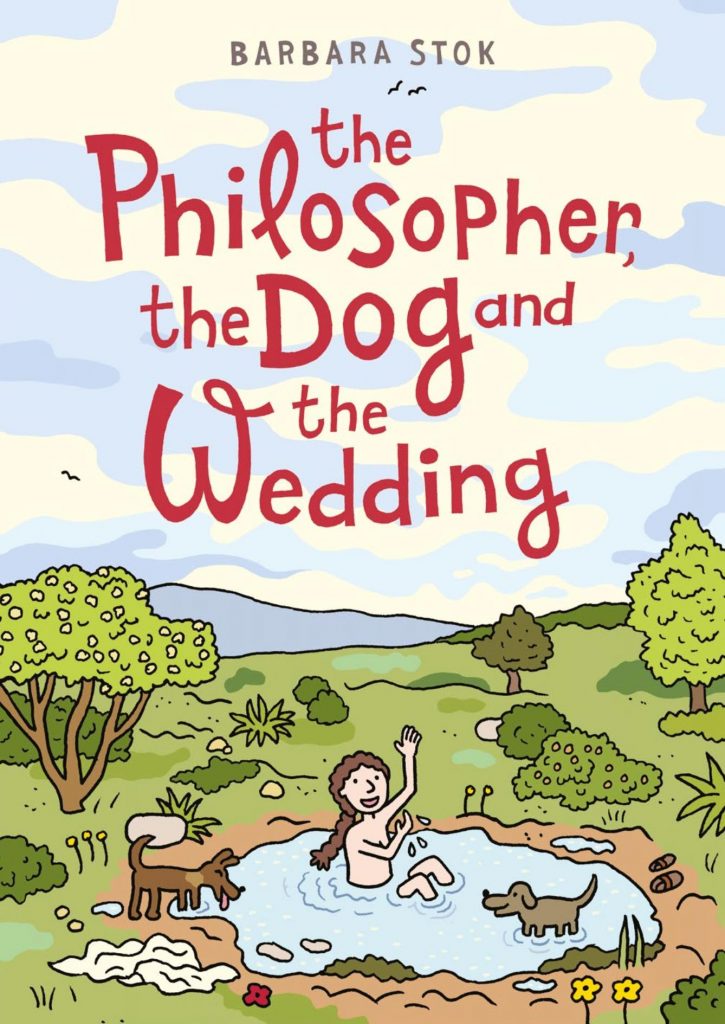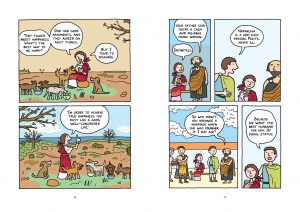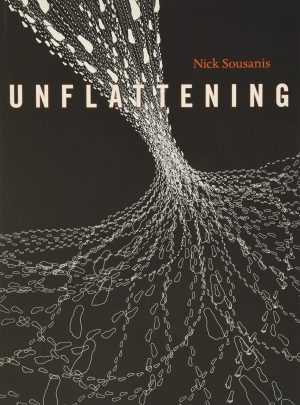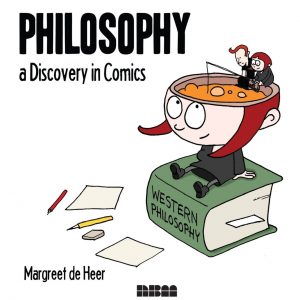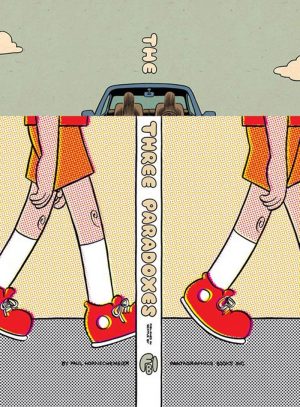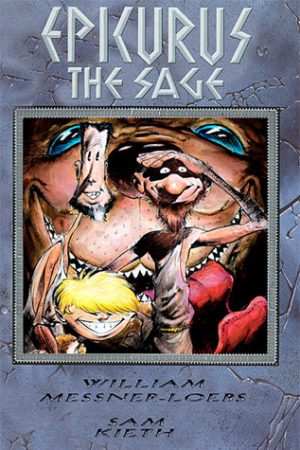Review by Frank Plowright
With rare exceptions, the further back in time one delves, the fewer records there are of someone’s life and achievements, so Barbara Stok heading back to 400BCE to provide the life and thoughts of what’s considered the first woman philosopher is ambitious. None of Hipparchia’s own writings survive, and what’s known about her is only through the writings of others, so Stok has her work cut out in presenting any form of biography despite those writings holding Hipparchia in high regard.
Stok works around the lack of source material by incorporating day to day life in Greece of the era, some of which will probably shock. Slavery is accepted, as is women being married to men twenty years older when aged fourteen. Hipparchia is presented as smart and independent, challenging social convention from early age, asking why it is that what’s seen as a good woman is merely an accepting woman.
Everything is presented in attractive cartooning, detailed, but never overwhelming and it’s a false assumption that the almost childlike simplicity of the art means a story aimed at a young audience. While the first half of The Philosopher, the Dog and the Wedding concentrates on day to day life, philosophical discussions become more prominent, although what’s presented can be easily understood by a smart teen, and there are plenty of messages still relevant to modern wellbeing. When Hipparchia’s brother is embarrassed about what others think, the philosopher Crates advises he not to be a slave to the opinions of others, which is certainly topical in the social media era. Stok plays to this on occasion, an example being treating the meetings between Hipparchia and Kallios considering marriage as a form of game show with progressing rounds.
As Hipparchia goes through the selection process for the bride of Kallios, she’s increasingly keen to learn, and shown seeking out opportunities to exercise her mind, disguising herself as a man to interact with Crates. He may be enlightened in some respects, but certainly not when it comes to women being educated.
Because so little is known about Hipparchia personally, Stok presents her as an avatar of her times, good and bad, providing extensive notes after the story explaining customs or story choices. She presents knowing juxtapositions, a solid example being a spread detailing the horrors of slavery in the silver mines followed by a spread of a feast the silver pays for. Hipparchia gradually rationalises what she doesn’t want from life, and a final spread underlines the relevance of her ideals to life as it’s lived now.
Hipparchia’s belief, inherited from Crates, is the old chestnut of riches not bringing happiness, so which is more important? Today, millennia later, the riches of some are still dependent on the poverty of others. Start your own philosophical discussion on why that should be the case, but just like life, Stok’s story can also be enjoyed on a simpler level.
